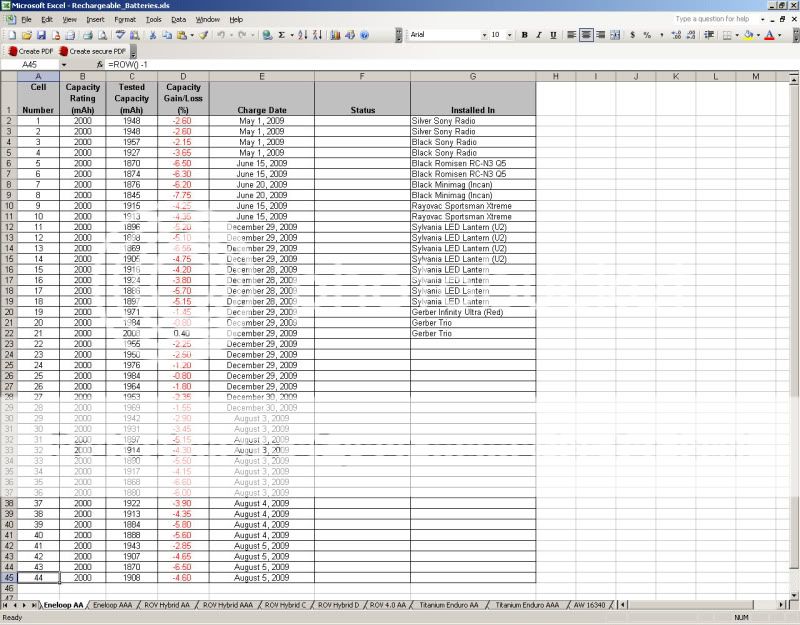In my days of innocence, battery management was easy. Buy alkaline AAs or AAAs, stick them in the light or device, and toss them when they stopped working. Rinse and repeat.
Now I am mostly using rechargeables (still AA and AAA so far) and I have a variety of batteries of different types, bought at different times. So I find I need a way to manage my batteries so I have an idea how old they are, how and where they are used, when they need to be tossed, etc.
For my 4XAA digicam it is fairly easy, I keep a set of 4 in the camera and a backup set of 4 in the camera case, so they get used and swapped in only one use and with no confusion (at least until a single cell in one of the sets starts going bad).
But what about managing the batteries that get used in my lights, as well as all the lights and other devices used by the rest of the family? How does everyone keep track of your batteries so you don't mix old and new ones, track how long ago they were charged if they are in a storage container, etc?
Thanks.
Now I am mostly using rechargeables (still AA and AAA so far) and I have a variety of batteries of different types, bought at different times. So I find I need a way to manage my batteries so I have an idea how old they are, how and where they are used, when they need to be tossed, etc.
For my 4XAA digicam it is fairly easy, I keep a set of 4 in the camera and a backup set of 4 in the camera case, so they get used and swapped in only one use and with no confusion (at least until a single cell in one of the sets starts going bad).
But what about managing the batteries that get used in my lights, as well as all the lights and other devices used by the rest of the family? How does everyone keep track of your batteries so you don't mix old and new ones, track how long ago they were charged if they are in a storage container, etc?
Thanks.



